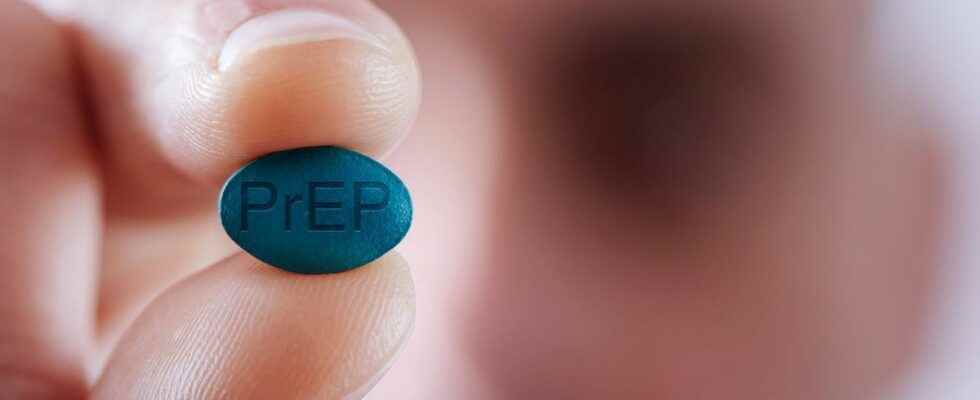Published on
Updated
Reading 3 mins.
A new study called ANRS-Prevenir confirms that on-demand pre-exposure prophylaxis (PrEP) is an alternative as “effective and safe” as taking it daily, to prevent HIV infection.
This study was conducted for three years on 3056 volunteers, all in Ile-de-France, for an average of 22 months between May 2017 and May 2019. “Our goal was to demonstrate the effectiveness of on-demand PrEp, with real-life data.” first indicates Professor Jade Ghosn, specialist in infectious diseases at Bichat hospital. The results are published in the journal The Lancet HIV June 27th.
The benefits of PrEP confirmed
Pre-exposure prophylaxis is a prevention tool for people at high risk of HIV infection, especially men who have sex with men. This preventive treatment is based on taking the fixed combination of tenofovir disoproxil/emtricitabine.
It can be taken continuously or on demand. It is therefore to study its effectiveness in the two modes of intake that this study was launched. The volunteers were divided into two groups: those who took PrEP every day (regime chosen by 50.5% of the volunteers), either taken on demand, i.e. before and after sexual intercourse (regime chosen by 49.5% of volunteers).
Six total seroconversions
“The people we followed were not constrained, they could take PrEP continuously, on demand, take it continuously for a few months and then switch to on demand, as they saw fit” adds the specialist. “At the end of our study, we found six seroconversions, which represents an incidence of 0.11 participants per year. This demonstrates that regardless of how it is taken, PrEP is effective and protects against HIV.”.
Patients who had stopped their treatment
Important fact to clarify: the six patients who were infected with HIV were not because PrEP was not effective, but because they stopped taking it.
“Looking at the data for these six cases, we found, by coincidence, that three of them were taking PrEP continuously and three others on demand, but all of them had stopped their treatment several months before, but had continued their risky behaviors, including unprotected sex” further specifies Jade Ghosn.
Towards an injectable treatment?
This finding prompts researchers to question the mode of taking this prophylaxis and the reason for the abandonment of this protection.
“The conclusion of this work highlights the fact that after two years, over the long term, there is a difficulty in continuing to take this prophylaxis.“adds Professor Ghosn. The solution could go through another galenic form with a longer lifespan.
“In the United States, we have just authorized PrEP in an injectable form to be done every two months, in Europe, the files are filed with health authorities, awaiting a response. It is less constraining but in the same way, if the individual in question does not go to make his injection, he will not be protected. What matters therefore is that we can offer prophylactic solutions, à la carte. And this study shows that PrEP prevented 361 seroconversions and as many future AIDS patients” concludes the specialist.
A significant number of other STIs
The study notes, however, that other infections were reported during the study period, including 43 cases of viral hepatitis (mainly hepatitis C) and bacterial STIs (chlamydia, gonorrhoea, Mycoplasma genitalium, syphilis). “The number of sexual intercourse without a condom reported in this study could explain these cases of STIs. This should be taken into account in future studies.“, says Professor Jean-Michel Molina.
